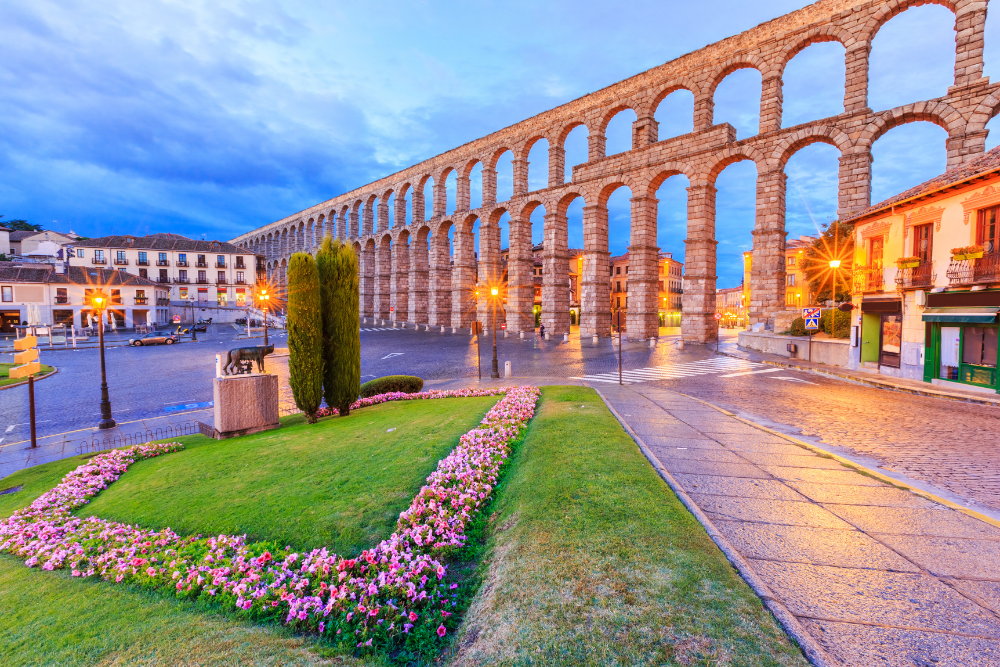The Aqueduct of Segovia stands as one of the most iconic and well-preserved Roman structures in Spain. Towering over the city of Segovia, this architectural marvel has captivated visitors for centuries with its grandeur and historical significance. A testament to Roman engineering and ingenuity, the aqueduct is a UNESCO World Heritage Site and a must-visit landmark for travelers.
1. A Glimpse into History
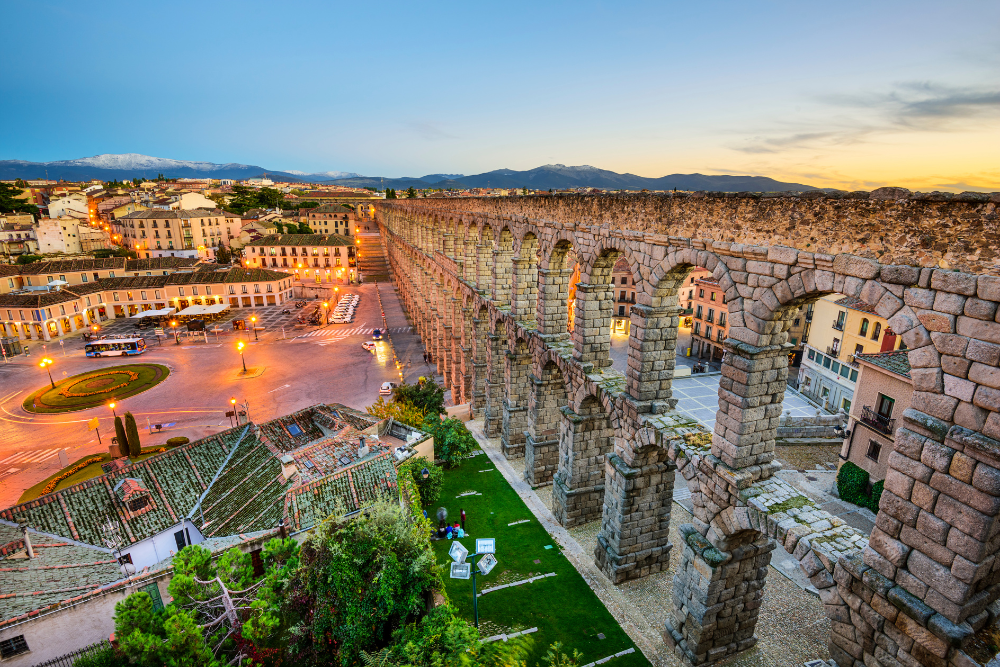
The aqueduct was built during the late 1st or early 2nd century CE, under the reign of Emperor Domitian or Trajan. Its purpose was to transport water from the Frío River, located about 17 kilometers away, to the city of Segovia. This impressive structure provided a reliable water supply for public baths, fountains, and households, supporting the city’s growth and prosperity.
Over the centuries, the aqueduct has withstood wars, natural disasters, and the passage of time. Its survival is a testament to the Romans’ remarkable engineering skills and the dedication of those who have preserved it.
2. Architectural Marvel
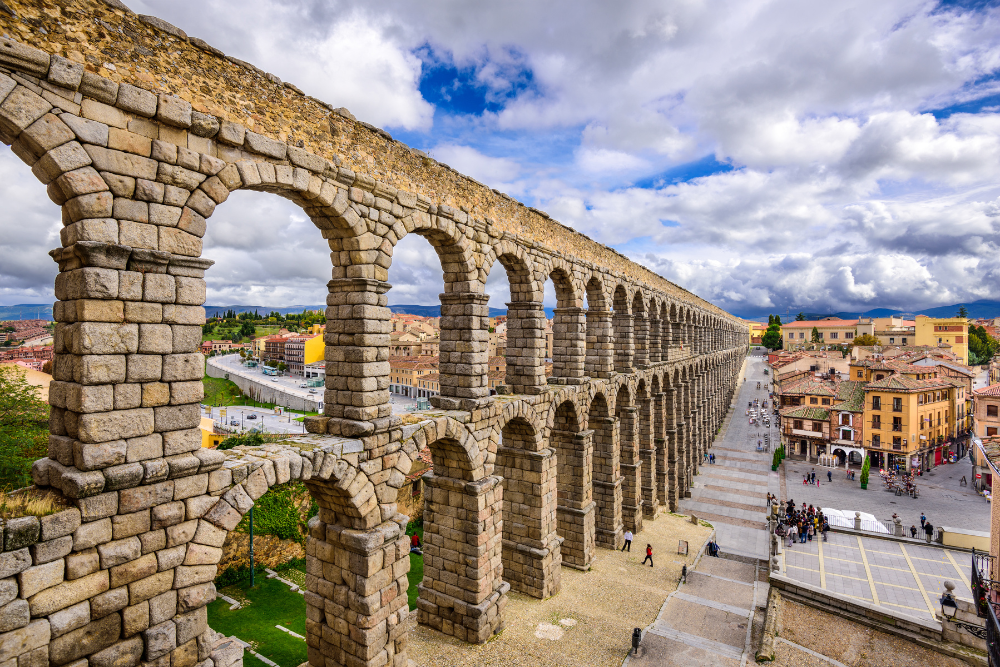
The Aqueduct of Segovia stretches over 15 kilometers, with its most famous section located in the heart of the city. This portion features 167 arches, built from granite blocks meticulously cut and assembled without the use of mortar. Standing over 28 meters high at its tallest point, the aqueduct’s symmetry and precision are awe-inspiring.
Its design exemplifies Roman engineering techniques:
- Gravity-fed System: The aqueduct relies on gravity to transport water, descending at a precise gradient to maintain flow.
- Durable Materials: The use of locally sourced granite ensured the structure’s longevity.
- Keystone Arches: The arches distribute weight evenly, enhancing stability and allowing the aqueduct to endure for centuries.
3. The Aqueduct Today
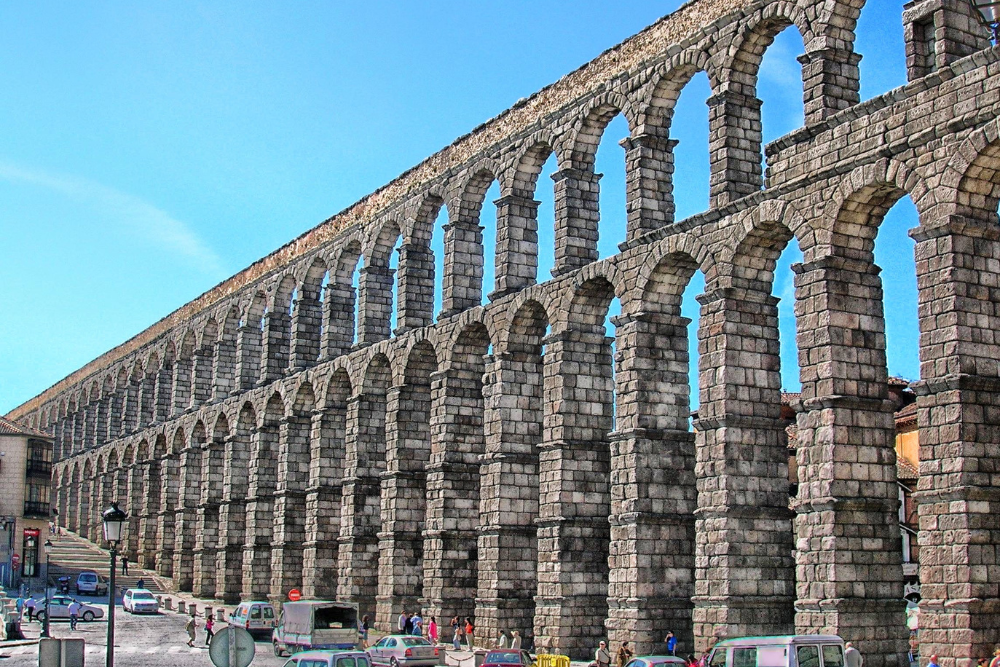
The aqueduct is a centerpiece of Segovia’s charm, seamlessly blending into the city’s modern life while preserving its historical essence. Visitors can explore its lower arches, marvel at its towering heights, and walk alongside portions of the structure. The Plaza del Azoguejo, at the base of the aqueduct, offers the best vantage point for photographs.
While the aqueduct no longer carries water, it remains a symbol of Segovia’s rich heritage and an enduring legacy of Roman innovation.
4. Legends Surrounding the Aqueduct
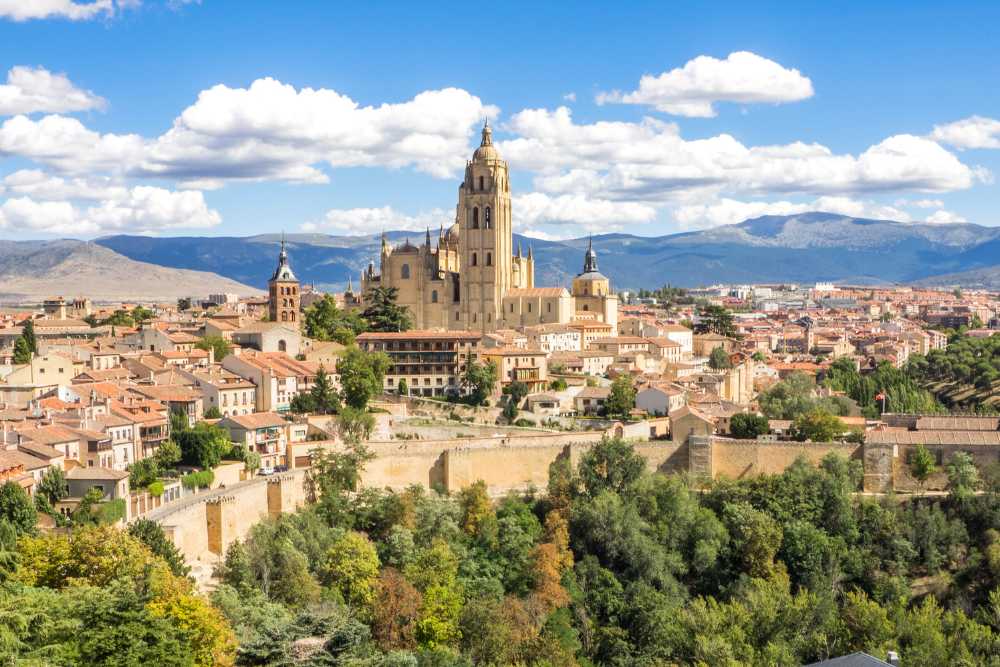
The aqueduct is steeped in local legends. One popular tale attributes its construction to the devil. According to the story, a young woman, tired of carrying water from the river, struck a deal with the devil: he would build the aqueduct in a single night in exchange for her soul. At dawn, as the devil placed the final stone, a ray of sunlight pierced the structure, saving the woman’s soul.
This legend adds an air of mystery and intrigue to the aqueduct, further enchanting visitors.
5. Planning Your Visit
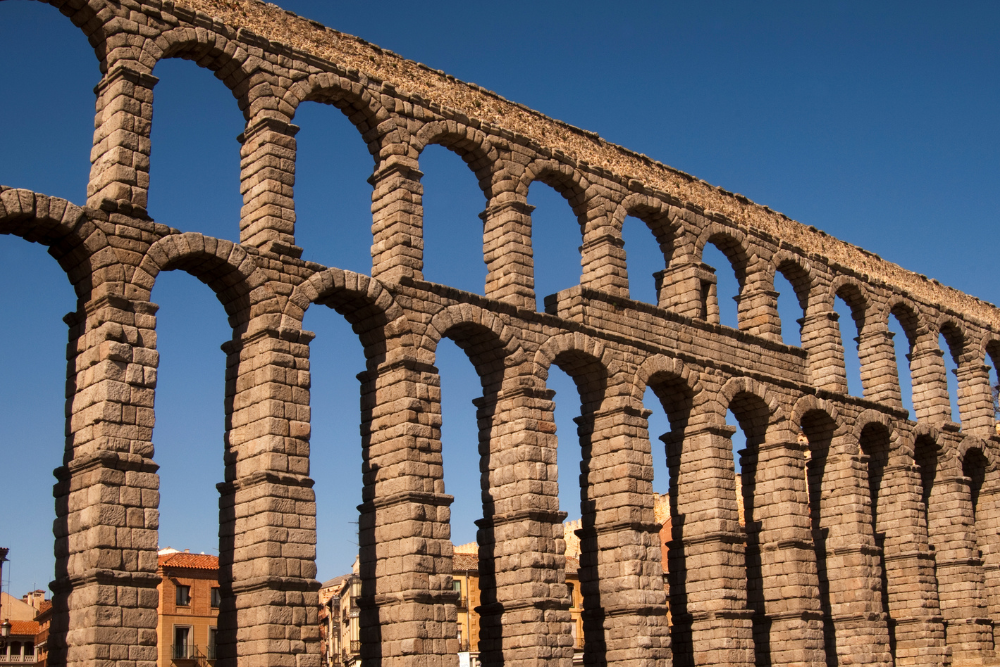
The Aqueduct of Segovia is easily accessible from Madrid, making it an ideal day trip destination.
Key Tips for Visitors:
- Best Time to Visit: Early morning or late afternoon provides the best lighting for photographs and fewer crowds.
- Guided Tours: Consider joining a guided tour to learn more about the aqueduct’s history and engineering.
- Nearby Attractions: Explore Segovia’s other landmarks, such as the Alcázar of Segovia and the Segovia Cathedral, to complete your visit.
A Timeless Icon
The Aqueduct of Segovia is more than just an ancient structure; it’s a window into the ingenuity of the Roman Empire and a symbol of Spain’s enduring cultural heritage. Its monumental presence, combined with its historical and architectural significance, makes it a must-see for anyone exploring the wonders of Spain.
Whether you’re a history enthusiast, an architecture admirer, or a traveler in search of unforgettable experiences, the Aqueduct of Segovia is sure to leave a lasting impression.



